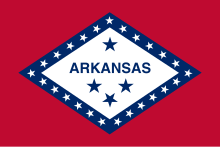Portal:Politics
| Main | Topics and categories | Tasks and projects |
The Politics portal
Politics (from Ancient Greek πολιτικά (politiká) 'affairs of the cities') is the set of activities that are associated with making decisions in groups, or other forms of power relations among individuals, such as the distribution of status or resources. The branch of social science that studies politics and government is referred to as political science.
Politics may be used positively in the context of a "political solution" which is compromising and non-violent, or descriptively as "the art or science of government", but the word often also carries a negative connotation. The concept has been defined in various ways, and different approaches have fundamentally differing views on whether it should be used extensively or in a limited way, empirically or normatively, and on whether conflict or co-operation is more essential to it.
A variety of methods are deployed in politics, which include promoting one's own political views among people, negotiation with other political subjects, making laws, and exercising internal and external force, including warfare against adversaries. Politics is exercised on a wide range of social levels, from clans and tribes of traditional societies, through modern local governments, companies and institutions up to sovereign states, to the international level.
In modern nation states, people often form political parties to represent their ideas. Members of a party often agree to take the same position on many issues and agree to support the same changes to law and the same leaders. An election is usually a competition between different parties.
A political system is a framework which defines acceptable political methods within a society. The history of political thought can be traced back to early antiquity, with seminal works such as Plato's Republic, Aristotle's Politics, Confucius's political manuscripts and Chanakya's Arthashastra. (Full article...)
Selected article
An Introduction to Animals and Political Theory is a 2010 textbook by the British political theorist Alasdair Cochrane. It is the first book in the publisher Palgrave Macmillan's Animal Ethics Series, edited by Andrew Linzey and Priscilla Cohn. Cochrane's book examines five schools of political theory—utilitarianism, liberalism, communitarianism, Marxism and feminism—and their respective relationships with questions concerning animal rights and the political status of (non-human) animals. Cochrane concludes that each tradition has something to offer to these issues, but ultimately presents his own account of interest-based animal rights as preferable to any. His account, though drawing from all examined traditions, builds primarily upon liberalism and utilitarianism.
Featured picture

The resignation letter of U. S. President Richard M. Nixon on August 9, 1974 during the Watergate scandal.

The signatories of the Act of Independence of Lithuania were the twenty Lithuanian men who signed the Act of Independence of Lithuania on February 16, 1918. The signatories were elected to the Council of Lithuania by the Vilnius Conference in September 1917 and entrusted with the mission of establishing an independent Lithuanian state. The proclaimed independence was established only in late 1918, after Germany lost World War I and its troops retreated from Lithuanian territory. What followed was a long process of building the state, determining its borders, and gaining international diplomatic recognition. The signatories succeeded in their mission and independent Lithuania survived until the Soviet Union occupied the state on June 15, 1940.
Their political, professional, and social backgrounds were diverse. Several rose to political prominence; Antanas Smetona and Aleksandras Stulginskis were later elected Presidents of Lithuania and Jonas Vileišis went on to become mayor of Kaunas, the temporary capital of Lithuania. After Lithuania lost its independence during World War II, six of the surviving signatories were sent to prison or executed by the Soviet government and six others emigrated to Western countries. (Full article...)

The Bharatiya Janata Party (BJP) is one of the two major parties in the political system of the Republic of India, the other being the Indian National Congress (INC). As of 2015[update], it is the country's largest political party in terms of representation in the national parliament. Established in 1980, the BJP's platform is generally considered as the right-wing of the political spectrum. As of 13 June 2024[update], 54 BJP leaders have held the position of a chief minister out of which thirteen are incumbent.
A chief minister is the head of government of each of the twenty-eight states and two union territories (UTs) (Delhi and Puducherry). According to the Constitution of India, at the state-level, the governor is de jure head, but de facto executive authority rests with the chief minister. Following elections to the state legislative assembly, the governor usually invites the party (or coalition) with a majority of seats to form the government. The governor appoints the chief minister, whose council of ministers are collectively responsible to the assembly. The chief minister's term is usually for a maximum of five years, with the confidence of the assembly's confidence. There are no limits to the number of terms the chief minister can serve. (Full article...)

There are 52 municipalities in Lycoming County, Pennsylvania. Under Pennsylvania law, counties have three main types of incorporated municipalities, of which Lycoming County has one city, nine boroughs and 42. As of the most recent United States Census (2020), Pennsylvania has 67 counties, which contain 1,547 townships, 955 boroughs (and 2 towns), and 56 cities. There are no unincorporated areas in the county, since all territory in Pennsylvania is incorporated.
The 52 incorporated municipalities in Lycoming County are the subject of the first list, which gives their names and etymologies, dates settled and incorporated, what they were formed from, area, population in 2020, and a map of their location within the county. Twenty other Pennsylvania counties were formed from or contain land originally in Lycoming County. The second list is of the 21 townships which were formerly incorporated in Lycoming County, and now are part of these other counties. It gives the same information as the first list, based on the current status of these townships. (Full article...)
The governor of Arkansas is the head of government of the U.S. state of Arkansas. The governor is the head of the executive branch of the Arkansas government and is charged with enforcing state laws. They have the power to either approve or veto bills passed by the Arkansas General Assembly, to convene the legislature, and to grant pardons, except in cases of treason and impeachment.
The state has had 46 elected governors, as well as 11 acting governors who assumed powers and duties following the resignation or death of the governor. Before becoming a state, Arkansas Territory had four governors appointed to it by the president of the United States. Orval Faubus (1955–1967) served the longest term as governor, being elected six times to serve 12 years. Bill Clinton (1979–1981; 1983–1992), elected five times over two distinct terms, fell only one month short of 12 years, and Mike Huckabee (1996–2007) served 10 years for two full four-year terms. The shortest term for an elected governor was the 38 days served by John Sebastian Little before his nervous breakdown; one of the acting successors to his term, Jesse M. Martin, took office only three days before the end of the term, the shortest term overall. (Full article...)

The president of Pakistan is the head of state of the Islamic Republic of Pakistan.
The complete list of presidents of Pakistan includes the persons sworn into the office of president following the proclamation of the Islamic Republic of Pakistan in 1956. (Full article...)
According to 2023 U.S. Census data, the average population of Alabama's 67 counties is 76,246, with Jefferson County as the most populous (662,895), and Greene County (7,341) the least. The average land area is 756 sq mi (1,958 km2). The largest county is Baldwin (1,590 sq mi, 4,118 km2) and the smallest is Etowah (535 sq mi, 1,386 km2). The Constitution of Alabama requires that any new county in Alabama cover at least 600 square miles (1,600 km2) in area, effectively limiting the creation of new counties in the state. (Full article...)
Of the eight governors of the state, two have been elected to three terms, four have been elected to two terms, and one has been elected to one term. No state governor has yet resigned or died in office, nor did any territorial governor die in office. George Ariyoshi was the first Asian American to be governor of any U.S. state. The current governor is Democrat Josh Green, who took office on December 5, 2022. (Full article...)
The Cabinet of the United States, which is the principal advisory body to the President of the United States, has had 67 female members altogether, with seven of them serving in multiple positions for a total of 74 cabinet appointments. Of that number, 39 different women held a total of 42 permanent cabinet posts, having served as the Vice President or heads of the federal executive departments; 32 more women held cabinet-level positions, which can differ under each president; and four officeholders served in both cabinet and cabinet-rank roles. No woman held a presidential cabinet position before the ratification of the 19th Amendment in 1920, which prohibits the federal government or any state from denying citizens the right to vote on the basis of sex.
Frances Perkins became the first woman to serve in a president's cabinet when she was appointed Secretary of Labor by President Franklin D. Roosevelt in 1933. Patricia Roberts Harris was the first African-American woman and the first woman of color to serve in a presidential cabinet when she was named Secretary of Housing and Urban Development by President Jimmy Carter in 1977. Two years later, Carter tapped her for Secretary of Health and Human Services, therefore making her the first woman to hold two different cabinet positions. Madeleine Albright, who was born in Czechoslovakia, became the first foreign-born woman to serve in a president's cabinet when she was picked by President Bill Clinton for United States Ambassador to the United Nations, a cabinet-rank position, in 1993. She was elevated to Secretary of State four years later, during Clinton's second term, thus making her, at the time, the highest-ranking woman in the history of the federal government. (Full article...)
The Mayor of Pichilemu is an elected politician who is the head of the executive branch of government of the commune of Pichilemu, Libertador General Bernardo O'Higgins Region, Chile. The mayor presides over the local city council, composed of six members, and serves as the civic representative of the commune. The mayor is popularly elected in a municipal election, by simple majority. The office is held for a four-year term without term limits.
Forty different individuals, including acting mayors, have held the office of mayor since the commune of Pichilemu was created in December 1891. José María Caro Martínez, elected in 1894, was the inaugural mayor of the commune, and served for almost four consecutive terms, interrupted by his resignation in 1905. The current mayor is independent Cristian Pozo Parraguez, who was elected in May 2021 and took office on that 28 June. (Full article...)
Selected quote
Selected biography
Elizabeth II (born 1926) is the constitutional monarch of 16 sovereign states known as the Commonwealth realms, head of the 54-member Commonwealth of Nations, and head of state of the Crown Dependencies and British Overseas Territories. Her father, George VI, acceded to the throne in 1936 on the abdication of his brother Edward VIII. She began public duties during the Second World War, in which she served in the Auxiliary Territorial Service. On George VI's death in 1952, she became Head of the Commonwealth and Queen of seven independent Commonwealth countries: the United Kingdom, Canada, Australia, New Zealand, South Africa, Pakistan, and Ceylon. Her coronation service in 1953 was the first to be televised. Since her accession, the number of her realms has varied as territories gained independence and some realms became republics. In 1947 she married Prince Philip, Duke of Edinburgh, with whom she has four children: Charles, Anne, Andrew, and Edward. Her reign of 72 years is the second-longest for a British monarch; only Queen Victoria has reigned longer. Elizabeth's Silver and Golden Jubilees were celebrated in 1977 and 2002; her Diamond Jubilee is being celebrated during 2012.
Did you know (auto-generated) -

- ... that the ideas of Albert Schädler became the founding ideas of the Progressive Citizens' Party, though he himself was opposed to the formation of political parties?
- ... that Colin Mackay, the political editor at Scottish Television, was "very sad" when Colin MacKay, the political editor at Scottish Television, died?
- ... that the Chinese government began compiling an official history of the Qing dynasty in 2002, but as of 2023 a protracted political review is forestalling its publication?
- ... that Nigeria's Muslim–Muslim ticket challenges the norm of religious balance in politics?
- ... that Jonathan Allen left journalism for politics before quitting 40 days later?
- ... that after criticizing the political patronage system, John Silva Meehan was hired as Librarian of Congress through "purely an act of political patronage"?
More did you know...
- ...that a logocracy is government through words?
- ...that the Jewish Socialist Workers Party in the Russian Empire mobilized 3,000 of its cadres in self-defense militias during 1906?
- ...that the liberal film company Brave New Films has produced full-length videos and paper advertisements in addition to the viral videos for which it is known?
- ...that the National Assembly of Azerbaijan was the first secular republican parliament in the Muslim world?
- ...that in world-system theory, sociologists debate whether two world-systems have ever existed during the same period?
- ...that former Republican California State Senator Becky Morgan served on the Board of Trustees of both her alma maters, Stanford University and Cornell University?
- ...that although U.S. President Barack Obama is Christian, high-ranked al-Qaida member Ayman al-Zawahiri has falsely claimed that Obama secretly "pray[s] the prayers of the Jews"?
- ...that during the Sixth Congress of the Cuban Communist Party, Raúl Castro proposed term limits for the country's leaders?
In this month
- February 4, 2003 – Yugoslavia was renamed to Serbia and Montenegro converting the federal republic to a looser union.
- February 6, 1911 – Ronald Reagan, 40th President of the United States, was born.
- February 16, 2005 – In the United States, the school board in Staunton, Virginia voted to continue classes in Weekday Religious Education. This was a milestone in the issue of Separation of church and state in the United States.
- February 20, 2005 – Spain approves the European Constitution in a consultative referendum, though with a low turnout of 42%.
News and Current events
- August 11: 4 local government areas in New South Wales, Australia locked down after COVID-19 case
- August 11: Australia: AstraZeneca vaccine access expanded by Victorian government
- August 1: Australia: Victorian lockdown lifted
- July 29: Tunisia's president dismisses prime minister, suspends parliament
- July 25: Australia: Wikinews interviews Reg Kidd, mayor of the City of Orange, about COVID-19 lockdown and local government
- July 23: South Australia enters week-long lockdown to contain COVID-19 Delta variant spread
- July 21: Technological University Dublin senior lecturer Dr Lorcan Sirr speaks to Wikinews on housing market in Ireland
- July 21: Three rural councils in New South Wales, Australia enter 7-day lockdown
- July 21: Australia: Victoria lockdown extended by a week with 85 active cases recorded
- July 15: California governor signs new state budget, eligible Californians to get stimulus payments
Topics and categories
General images
Related portals
Associated Wikimedia
The following Wikimedia Foundation sister projects provide more on this subject:
-
Commons
Free media repository -
Wikibooks
Free textbooks and manuals -
Wikidata
Free knowledge base -
Wikinews
Free-content news -
Wikiquote
Collection of quotations -
Wikisource
Free-content library -
Wikiversity
Free learning tools -
Wiktionary
Dictionary and thesaurus

![Image 1 Seal of the governor The governor of West Virginia is the head of government of West Virginia and the commander-in-chief of the state's military forces. The governor has a duty to enforce state laws, and the power to either approve or veto bills passed by the West Virginia Legislature, to convene the legislature at any time, and, except when prosecution has been carried out by the House of Delegates, to grant pardons and reprieves. Since West Virginia was admitted to the Union on June 20, 1863, during the American Civil War, 35 men have served as governor [needs update]. Two, Arch A. Moore Jr. (West Virginia's 28th and 30th governor) and Cecil H. Underwood (West Virginia's 25th and 32nd governor), served two nonconsecutive terms in office. The longest-serving governor was Moore, who served for three terms over twelve years. The state's first governor after admission into the Union, Arthur I. Boreman, served the most consecutive terms, resigning a week before the end of his third term. Before the state's admission, Francis Harrison Pierpont, the "Father of West Virginia," was elected governor during the Wheeling Convention of 1861. Daniel D.T. Farnsworth was senate president at the time; he filled the last seven days of Boreman's term and remains the shortest-serving governor. Underwood has the unusual distinction of being both the youngest person to be elected as governor (age 34 upon his first term in 1957) and the oldest to both be elected and serve (age 74 upon his second term in 1997; age 78 at the end of his second term in 2001). The current governor is Republican Patrick Morrisey, who assumed office on January 13, 2025. (Full article...)](/uploads/wikipedia/en/d/d2/Blank.png?auto=webp)






















































